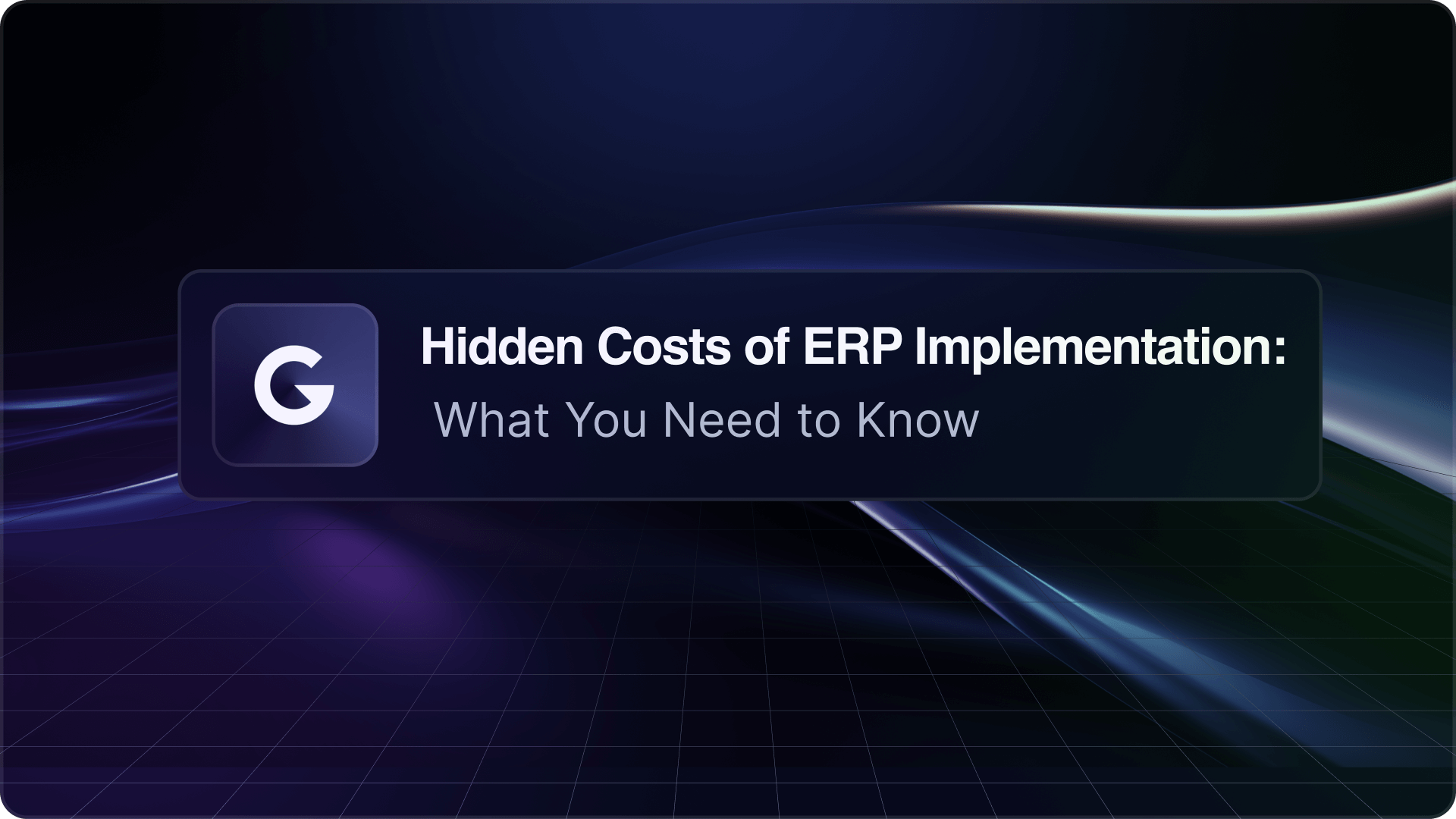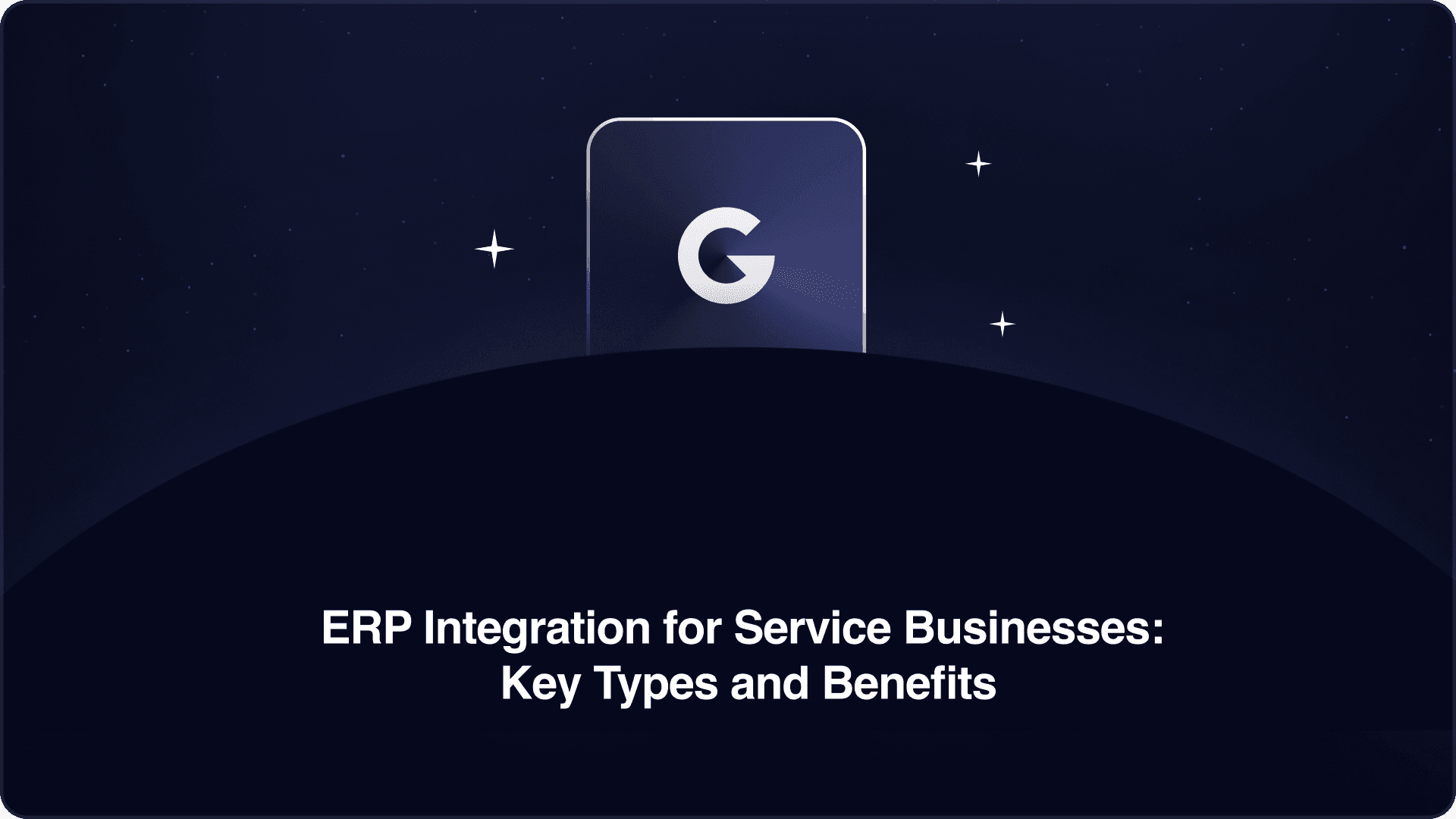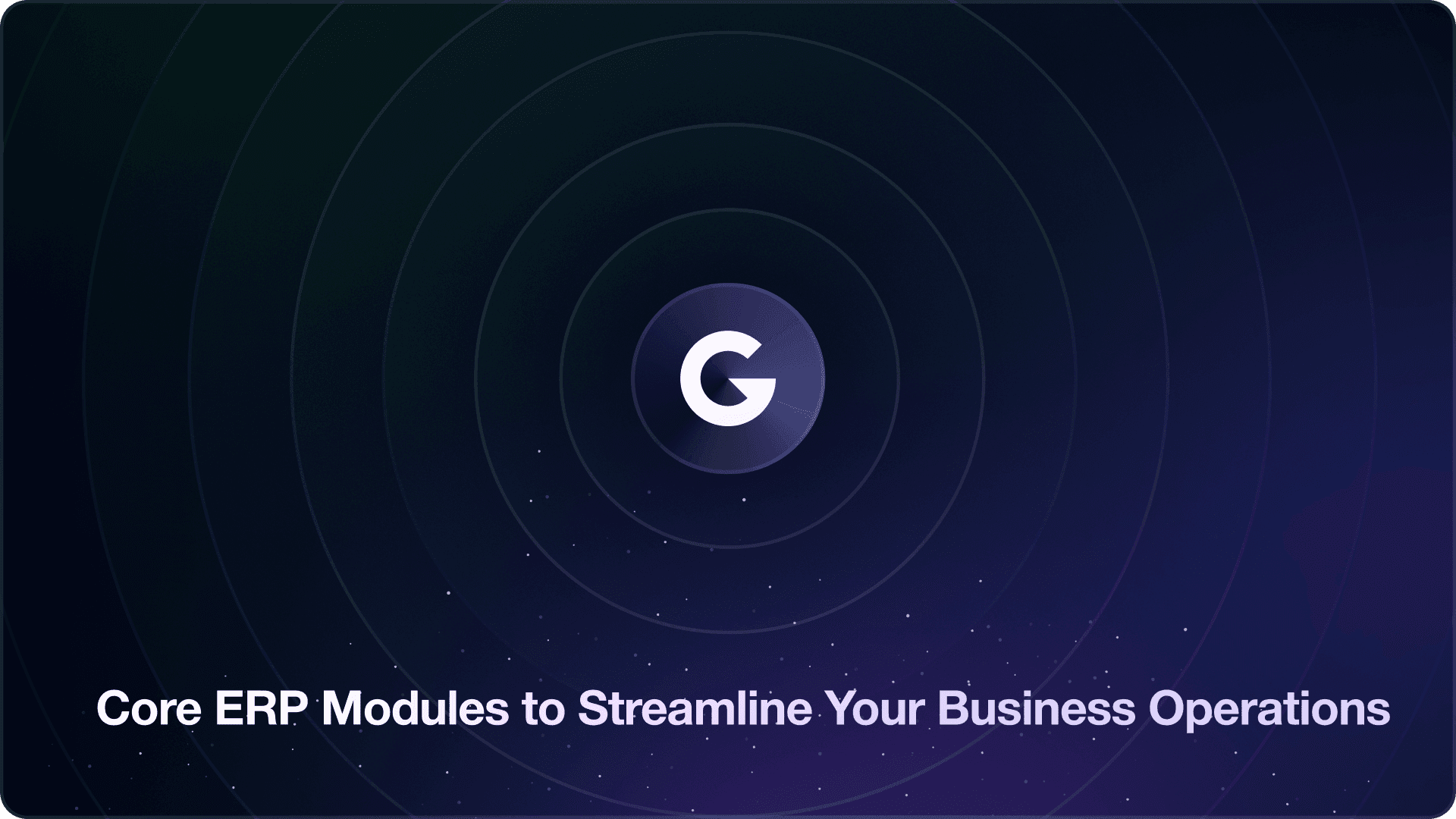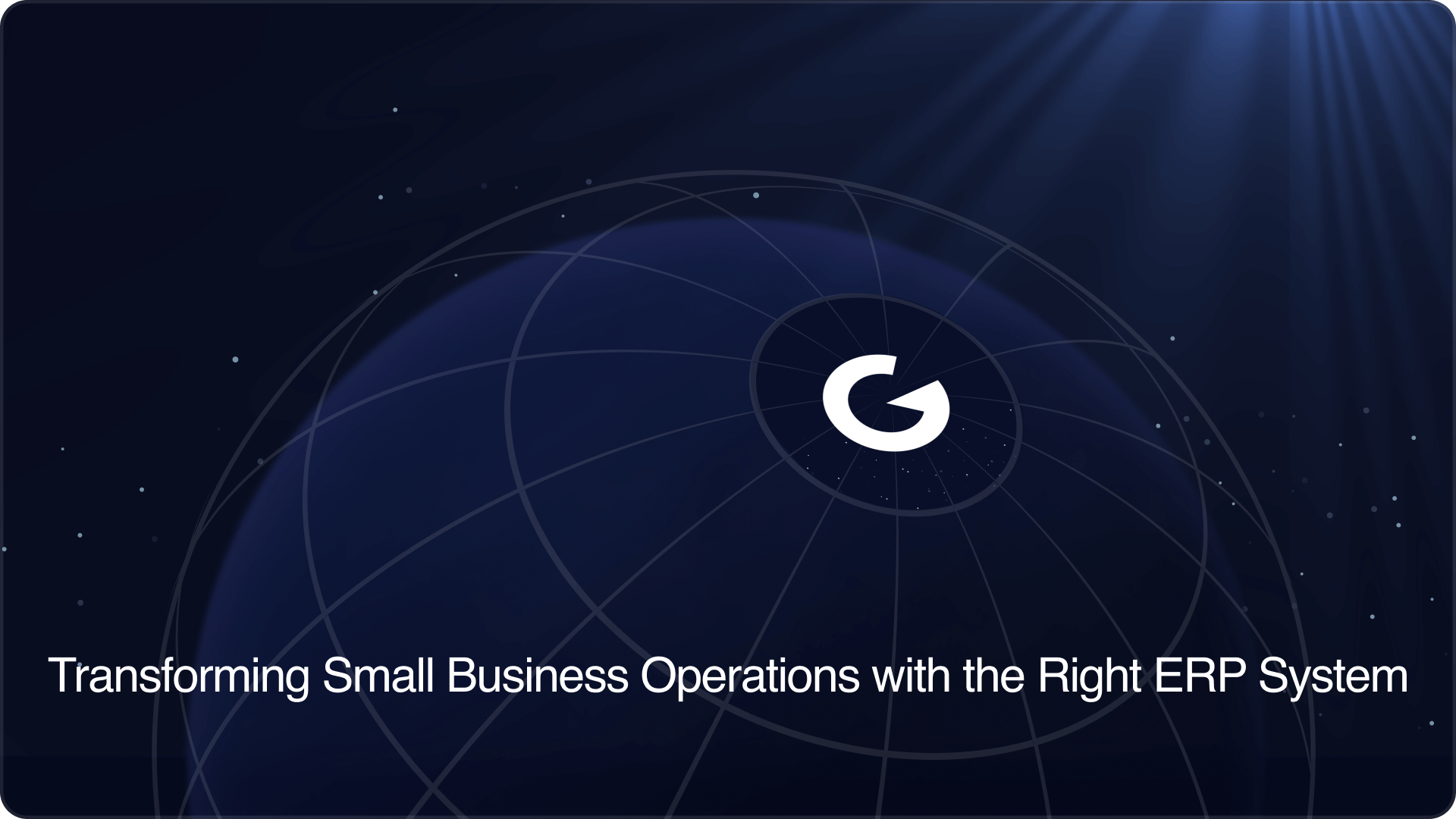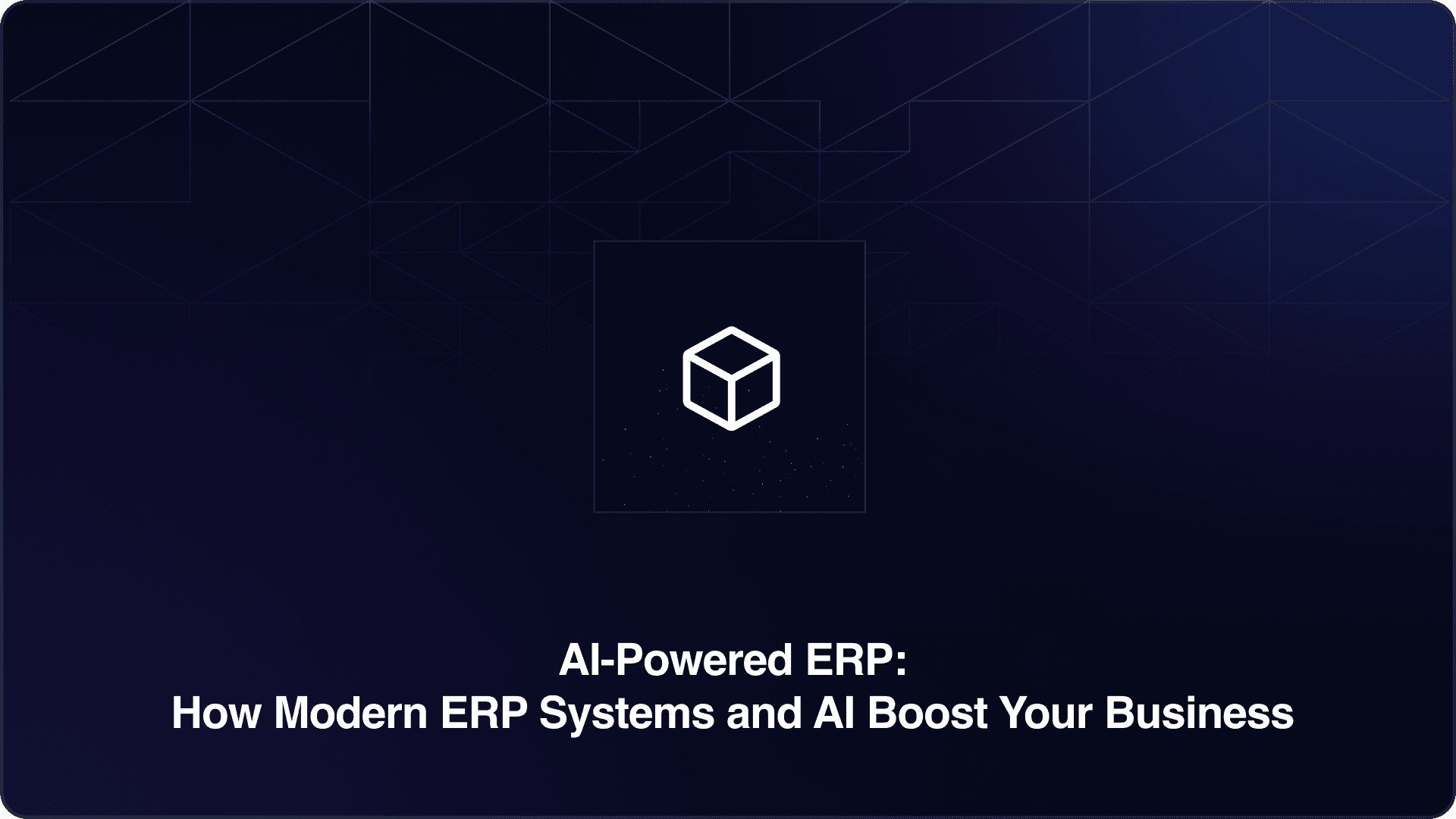Enterprise Resource Planning (ERP) systems have become essential tools for businesses looking to streamline operations, improve efficiency, and gain a competitive edge. While the benefits of implementing an ERP system are well-documented, many businesses are caught off guard by the hidden costs that can arise during the implementation process. These costs can take your budget by surprise, leading to frustrating overruns and delays.
In this article, we’ll explore the hidden costs of ERP implementation and provide actionable insights to help you avoid them. Whether you're a business owner, CIO, CFO, or another decision-maker, understanding these costs is key to keeping your ERP project on track.
Let’s get cracking!
What Are ERP Implementation True Costs?
When planning an ERP implementation, most businesses budget for the obvious expenses—software licenses, hardware, and installation. However, ERP projects are often complex, and it's the unforeseen costs that can catch you off guard.
These hidden costs stem from several factors, including data migration, system customization, and ongoing maintenance, to name a few.
Below are some of the most common hidden ERP costs you should watch out for:
1.Data Migration Costs
One of the most significant hidden costs in ERP implementation is data migration. Moving your existing data from legacy systems to your new ERP platform is a complex and time-consuming process that often proves more challenging than anticipated.
You'll need to consider the following factors that can drive up data migration costs:
- Data cleaning and preparation: Your legacy data may be inconsistent, outdated, or formatted differently than what your new ERP system requires. Cleaning and standardizing this data takes time and resources.
- Custom migration tools: Depending on your current systems and the ERP you're implementing, you may need to develop custom tools or scripts to facilitate the migration process.
- Multiple iterations: Data migration is rarely a one-time event. You'll likely need to perform several test migrations before the final cutover, each requiring time and resources.
- Data validation: After migration, you'll need to invest time in verifying that all data has been transferred correctly and is accessible in the new system.
To minimize these costs, start planning your data migration strategy early in the implementation process. Identify which data is essential to migrate and which can be archived or discarded. This approach can significantly reduce the complexity and cost of the migration process.
2.Customization and Integration Fees
While ERP systems are designed to meet the needs of a wide range of businesses, it's rare for an out-of-the-box solution to align perfectly with your unique processes. This is where customization comes into play, and it's also where costs can quickly escalate.
Consider these aspects of customization and integration that can lead to unexpected expenses:
- Custom development: Tailoring the ERP system to your specific needs often requires custom coding, which can be time-consuming and expensive.
- Third-party integrations: If you need to connect your ERP with other software systems, such as CRM or e-commerce platforms, you'll incur additional integration costs.
- Testing and quality assurance: Each customization and integration needs to be thoroughly tested, which adds to the overall project timeline and cost.
- Future upgrade complications: Heavy customization can make future ERP upgrades more complex and expensive, as custom features may need to be rebuilt or adapted.
To keep customization costs in check, critically evaluate each requested modification. Ask yourself if the customization is truly necessary or if you can adapt your processes to fit the standard ERP functionality. Prioritize integrations that offer the highest return on investment and consider phasing less critical integrations over time.
3.User Training and Change Management
Implementing an ERP system fundamentally changes how your employees do their jobs. Without proper training, adoption rates may be low, and mistakes may be made. This leads to inefficiencies, frustration, and additional costs. Many Businesses often underestimate these costs, which can include everything from lost productivity during training sessions to the cost of hiring change management experts.
To address these challenges, develop a comprehensive training and change management strategy early in the implementation process. Consider a train-the-trainer approach to build internal expertise and reduce long-term training costs. Additionally, involve key stakeholders from various departments in the implementation process to foster buy-in and smooth the transition.
4.Vendor Support and Maintenance
While you might budget for the software and initial setup, ongoing vendor support and maintenance costs are often left out of the equation. Depending on your agreement with the ERP vendor, you may incur regular fees for business hour maintenance support, software upgrades, and fix bugs. Additionally, if you get locked into a specific vendor for extended periods, this "vendor lock-in" can limit your flexibility and increase costs over time as you're tied to the vendor's pricing and terms for future services.
For reducing these costs effectively, carefully review your vendor's support and maintenance agreements. Negotiate terms upfront and consider multi-year agreements that may offer better rates. Also, factor in the long-term total cost of ownership when selecting your ERP vendor, not just the initial implementation costs.
Hidden Costs in the ERP Implementation Timeline
ERP implementations often take longer than expected, and delays can significantly impact your budget. Common timeline-related hidden costs include:
- Extended consultant engagements: If your project runs over schedule, you may need to keep external consultants on board longer than planned.
- Prolonged dual-system operation: Operating your legacy systems alongside the new ERP during an extended implementation can increase costs.
- Delayed benefits realization: The longer your implementation takes, the longer you'll wait to realize the efficiency gains and cost savings promised by the new system.
To mitigate these risks, build buffer time into your implementation schedule and have contingency plans in place for potential delays. Regular project check-ins and milestone reviews can help you identify and address issues before they cause significant timeline slippage.
Unrealistic Budgeting & Timeline
One of the most common pitfalls in ERP implementation is setting an unrealistic budget from the start. This often stems from:
- Underestimating project complexity: ERP implementations touch every aspect of your business, making them more complex than many other IT projects.
- Failing to account for all cost categories: As we've discussed, there are many hidden costs that may not be apparent at first glance.
- Overly optimistic timelines: Rushing the implementation to save money often leads to costly mistakes and rework.
For example, HP's ERP implementation failure exemplifies the above pitfalls.In 2004, Hewlett Packard attempted to consolidate its IT infrastructure with a centralized ERP system. However, inadequate testing, unrealistic timelines, and poor project management resulted in significant disruptions. The aggressive implementation timeline was one of the critical factors leading to $160 million in sales losses, largely due to HP's failure to account for the full scope and complexity of the ERP migration. This serves as a cautionary example of the risks associated with underestimating costs and timelines.
To avoid these issues, work closely with your ERP vendor and implementation partner to develop a comprehensive budget that accounts for all potential costs. It's also wise to build in a contingency fund of 10-20% to cover unexpected expenses.
Poor Planning and Scope Creep
Scope creep occurs when the original goals of the ERP project expand beyond what was initially planned. Perhaps new features are added, or unexpected issues arise that require more work. Poor planning at the start of the project is a leading cause of scope creep. If you don’t have a clear understanding of your needs and the ERP system’s limitations, you may find yourself constantly adding new requirements, which leads to additional costs and extended timelines.
Invest time in thorough upfront planning is a way to help your business tackle the scope creep. Additionally, clearly define your project scope, objectives, and success criteria. Implement a formal change request process to evaluate and approve any additions to the original scope.
How to Prevent ERP Implementation Hidden Costs
While it's impossible to eliminate all hidden costs, you can take steps to minimize their impact by:
Proper Planning and Budgeting
The most important step to avoiding hidden costs is proper upfront planning. Make sure you have a detailed understanding of your business needs, the ERP system’s capabilities, and any potential challenges.
Create a realistic budget that includes a buffer for unexpected costs. Make sure to involve all relevant stakeholders in the planning process, including your IT team, department heads, and end-users, to ensure all needs are accounted for.
Vendor Selection and Negotiation
Choosing the right vendor can make or break your ERP implementation. Carefully evaluate vendors not only based on their software’s features but also on their pricing model, support services, and long-term flexibility.
When negotiating with vendors, make sure you fully understand the terms of the agreement, including any ongoing fees, maintenance costs, and potential lock-in clauses. Be sure to negotiate favorable terms, such as capped fees for customizations or a clear roadmap for future upgrades.
Final Conclusion
Implementing an ERP system is a complex undertaking with the potential for significant hidden costs. By understanding these potential pitfalls and taking proactive steps to mitigate them, you can keep your ERP project on track and within budget.
With thorough planning, realistic budgeting, and ongoing vigilance are key to avoiding unexpected expenses and ensuring a successful ERP implementation that delivers value to your business.
FAQs
1. What are the most common hidden costs in ERP implementation?
The most common hidden costs include data migration, customization and integration fees, user training and change management, and ongoing vendor support and maintenance.
2. How can I avoid scope creep during ERP implementation?
Scope creep can be avoided by setting clear project goals and requirements from the start and sticking to them. Regularly review the project scope with your team and avoid adding new features unless absolutely necessary.
3. Why is vendor lock-in a concern?
Vendor lock-in can limit your flexibility and lead to higher long-term costs. If you're tied to a specific vendor for support, upgrades, or customization, you may end up paying more over time as you have less control over pricing.
4. What steps can I take to control the timeline of my ERP implementation?
You can control the timeline by creating a realistic project plan, ensuring all stakeholders are aligned on goals and expectations, and regularly monitoring progress. It’s also important to build in buffer time for unforeseen issues.
